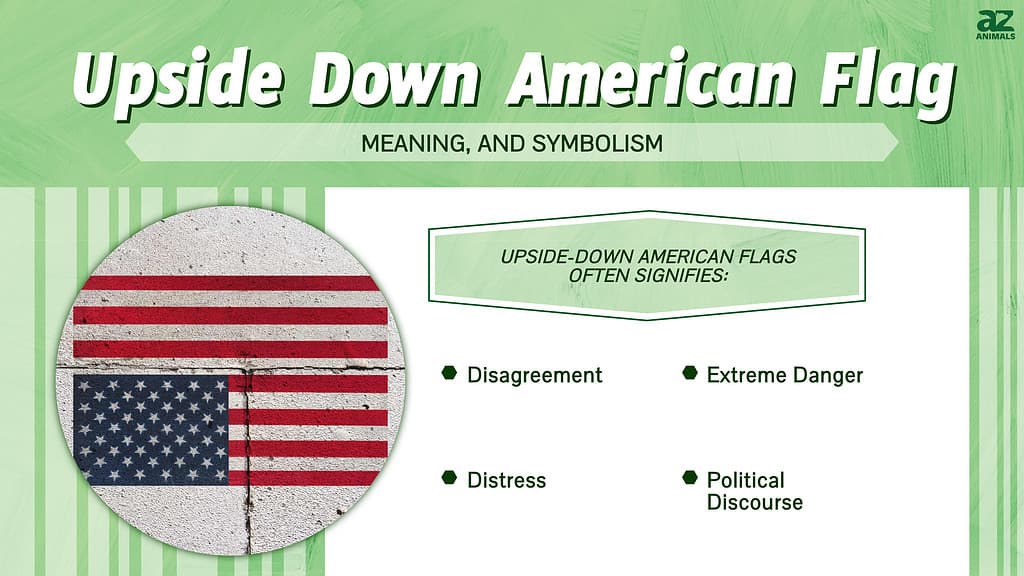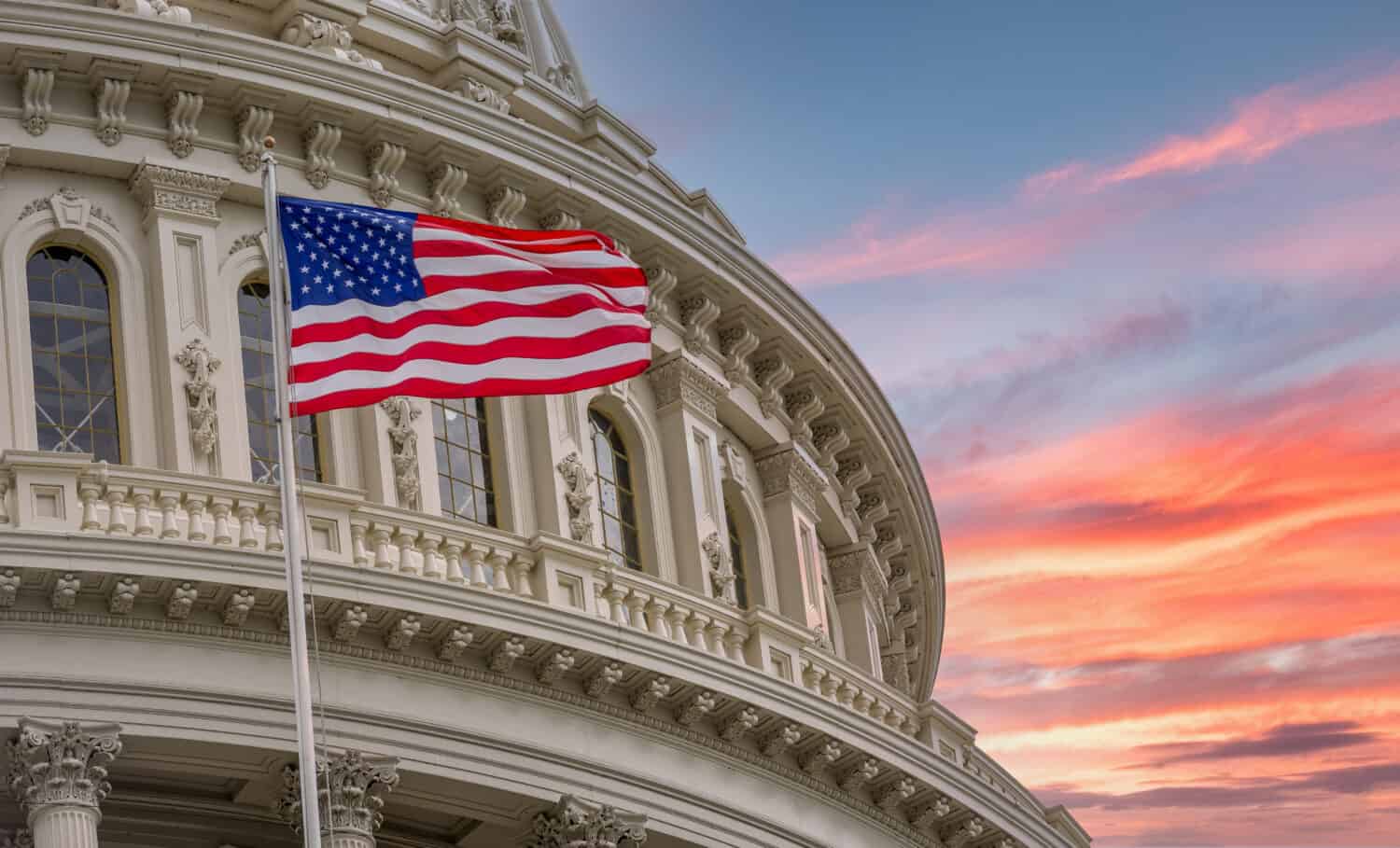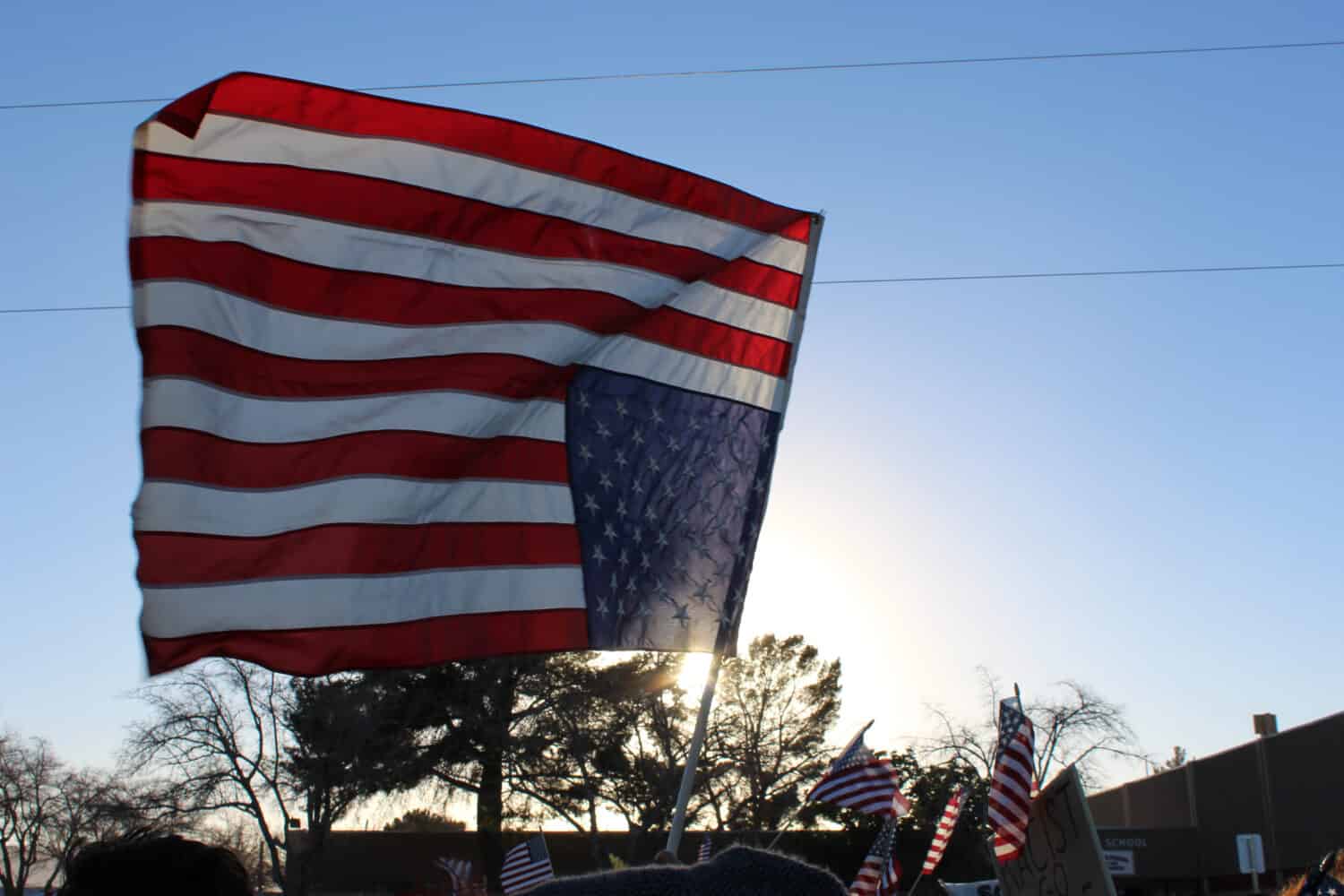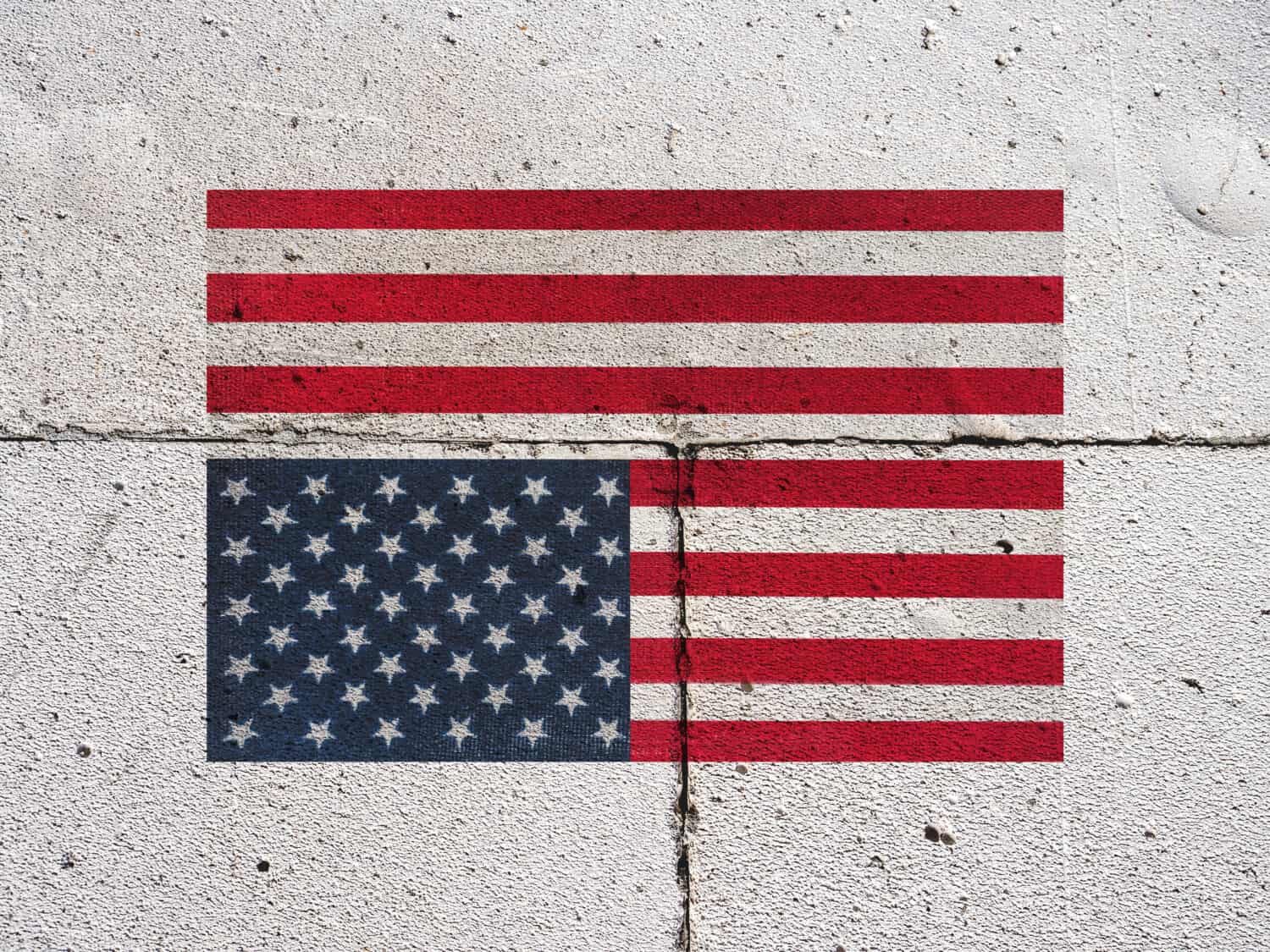Introduction
The American flag has evolved and changed significantly over time. Currently, the flag has red, white, and blue coloring with 50 white stars and 13 red and white stripes. The 50 stars in the flag’s upper left corner represent the 50 United States, and the 13 stripes represent the original 13 colonies. While the American flag has not changed since August 1959 when Hawaii gained statehood, it has had many iterations. In total, 27 different versions of the American flag have existed! Keep reading to learn about the history of the American flag and the symbolism behind an upside-down American flag.

In total, 27 different versions of the American flag have existed!
©Leonard Zhukovsky/Shutterstock.com
History of the American Flag
For almost three centuries, the American flag has symbolized the New World and subsequently the United States. The basic outline of the flag has remained the same. However, many different versions of the flag have existed for various reasons. Here is an overview of the most historically significant versions of the American Flag.
13-Star American Flag

The 13-star American flag was the first to represent the country.
©Nixx Photography/Shutterstock.com
On June 14, 1777, the 13-star American flag became the first flag to represent the area. The general layout was the same, with 13 red and white stripes stretching horizontally across the flag and a blue square in the corner. However, the interior of the blue square looked very different. Instead of 50 white stars in nine rows, the flag only had 13 white stars forming a circle. These stars and stripes represented the original 13 colonies that revolted against British rule. The red white and blue colors have no specific meaning but were taken from the colors of the British flag. Francis Hopkinson, a Congressman from New Jersey, designed the first American flag. This version of the American flag flew from 1777 to 1795.
15-Star American Flag
In 1791, Vermont joined the United States, and in 1792, Kentucky followed suit. The addition of a 14th and 15th state to the country meant that the original American flag was no longer accurate. Two white stars were added to the upper left section of the flag. This changed the formation from a circle of stars to five rows of three stars each. During the War of 1812, this flag inspired Francis Scott Key to write “The Star Spangled Banner.” The inspirational song remains the country’s national anthem to this day. The 15-star American flag was the official flag of the country from 1795 to 1818.
20-Star American Flag
In 1818, five new stars were added to the American flag to represent the new states of Tennessee, Ohio, Louisiana, Indiana, and Mississippi. This happened after Congress passed the Flag Act of 1818, which formalized the layout of the American flag. The act stated that the flag would keep the design of 13 red and white stripes and that a white star would be added to the blue background for every state that was added to the Union. While this flag was significant, it only lasted for about a year before more stars were added to represent new states.
31-Star American Flag
With the addition of California to the United States, Manifest Destiny was fulfilled. In 1845, the Manifest Destiny idea was adopted. This idea said that the United States was destined by God to expand across the entire continent of North America. When California entered the Union just five years after the Manifest Destiny idea was born, it spoke to the prosperity of the New World. California drew many settlers hoping to get rich during the Gold Rush and quickly gained a large enough population for statehood. The 31-star American flag flew from 1851 to 1858.
50-Star American Flag

The 50-star American flag was the first flag to make it off of Earth.
©Castleski/Shutterstock.com
When Hawaii joined the United States in 1959, the 50-star American flag was born. This flag has been the official American flag ever since and is the longest-flying flag in the history of the United States. The 50-star American flag was also the first flag to make it off of Earth. In July of 1969, Buzz Aldrin and Neil Armstrong planted the flag on Earth’s moon. While the flag is no longer in the same spot, it marks a significant time in both American and human history. The 50-star American flag has been the official flag since 1960, and 13 presidents have served under it.

The Meaning of an Upside-Down American Flag
While the American flag represents the United States as a whole, its presentation can have different meanings. For example, a flag flown at half-mast signifies a period of mourning for the country or specific area surrounding the flag. Displaying the flag upside-down, however, has a much more complicated interpretation. Here is the history and meaning behind an upside-down American flag.
The United States Flag Code

The United States Flag Code was published in 1923 and later adopted by Congress in 1942.
©tokar/Shutterstock.com
In the early 1900s, Civil War veterans wishing to honor the flag they fought to defend led the movement against flag desecration. Their activism was mainly a response to the flag being used as a commercial and political tool rather than a symbol of the country. After World War I, the first National Flag Conference was held in Washington D.C. The gathering saw the creation of the United States Flag Code. This official set of guidelines for how to display and respect the flag came after many states had already passed laws regarding the flag.
The United States Flag Code was published in 1923 and later adopted by Congress in 1942. The codes dictate that the flag should be flown on all national holidays at every public institution in the country. The flag is also to be flown on other significant days of the year such as election days and historical anniversaries.
Details of the Flag Code
In addition to instructing when to fly the American flag, the United States Flag Code provides guidelines on how to fly it. If the flag is hung vertically, the blue section should always be to the viewer’s left. The flag should always be above any other flags on the flagpole, and to the far right of all other flags in a procession. If the flag is not on a flagpole, it must be displayed flat or suspended so that it falls freely. The flag cannot touch anything below it, and can never be used in place of a ceiling.
While these rules seem strict the creators of the code believed they would preserve the idea of the American flag as the representation of a living country. However, in 1989, the United States Supreme Court ruled against flag-protection laws. This was because the laws were determined as a violation of free speech mentioned in the first amendment.
The Upside-Down American Flag

During times of political distress, members of a dissenting party will fly the flag upside-down to signify their disagreement.
©bmw41/Shutterstock.com
When the United States Flag Code was published, the flying of an upside-down American flag had a clear meaning. The code explained that the flag should only be flown upside-down in times of extreme danger and distress. This out-of-the-ordinary presentation of the flag would serve as an alert to others of the threat at the time. However, the use of the upside-down American flag has recently become much more popular. During times of political distress, members of a dissenting party will fly the flag upside-down to signify their disagreement. Especially since the 2016 election, the upside-down American flag has transformed from a symbol of physical danger. Now, it is being used as a vehicle for political discourse and expression.
Thank you for reading! Have some feedback for us? Contact the AZ Animals editorial team.








